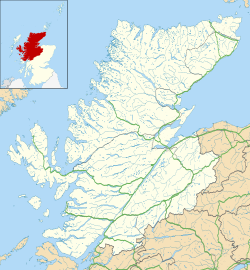RAF Dounreay | |
|---|---|
| Summary | |
| Airport type | Military |
| Operator | RAF, Royal Navy |
| Location | Dounreay |
| In use | 1944–1954 |
| Elevation AMSL | 112 ft / 34 m |
| Coordinates | 58°35′0″N3°43′40″W / 58.58333°N 3.72778°W |
| Map | |
 | |
Was an airfield in Dounreay, UK that opened in April 1944. [1]
In 1955 the airfield was taken over by the United Kingdom Atomic Energy Authority (UKAEA) for developing a fast breeder reactor. One runway was kept operational until the 1990s for transport to/from the site.
